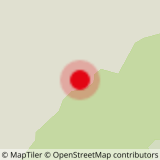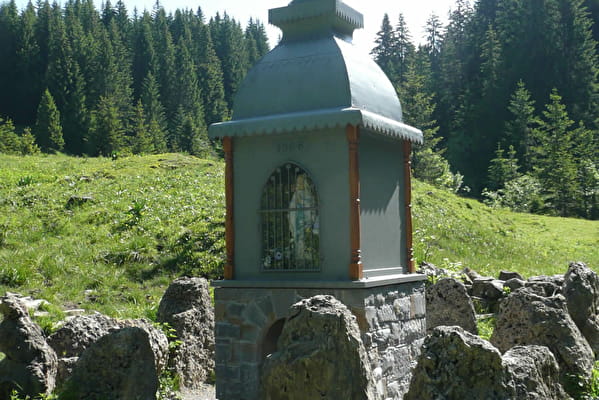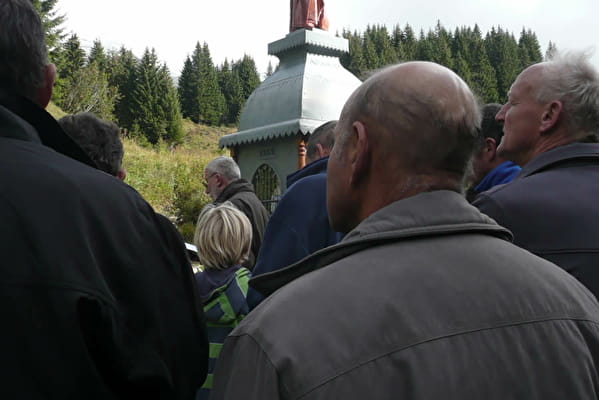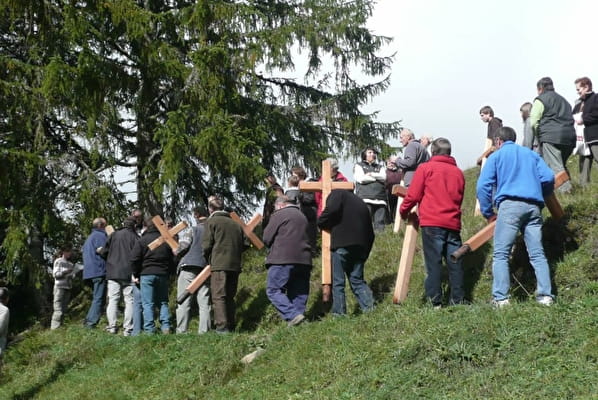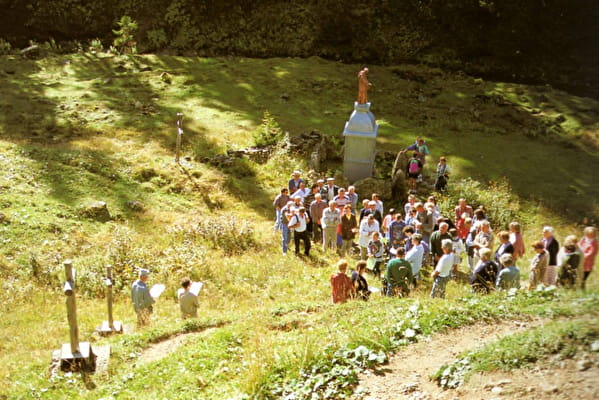It restored an ancient pigrimage route which celebrated the legendary visit of the Blessed John of Spain, founder of the Chartreuse du Reposoir (the Charterhouse in Le Reposoir).
The Stations of the Cross begin with a metal statue of St Anne with the Virgin learning to read. This statue, dating from 1868, has the following inscription written on it : « Mgr Magnin grants 40 days of indulgence to anyone who, when seeing this statue, will say an Ave Maria and a Saint Anne, pray for us ». Close to the statue, a little further down, there is a metal crucifix which was inaugurated in 1932 at the same time as the Stations of the Cross. Both the statue of Saint Anne and the cross were repainted in 1954.
The first Stations of the Cross was authorised by the diocese of Annecy in August 1888, enabling pilgrims to go from the chapel to the oratory. The second Stations of the Cross, which replaced the previous one, was inaugurated in July 1932, following a donation by Claude Perrillat, also known as Pollet. The Stations of the Cross has since been renovated 3 times, in 1954, in 1974 and more recently in 2010. Since 1974 the crosses are removable. They are put up by farmers for the mass that marks the beginning of the summer pasture season (alpage) and they are taken down again in the autumn to mark the end of the summer season. The Stations of the Cross have 14 stations, with a halt at each one to say prayers.
This Stations of the Cross finally leads to the Blessed Fountain. The legend tells of a pilgrimage during the time of John of Spain, who is said to have rested and drank here shortly before founding the Carthusian Monastery of Le Reposoir in 1151. There are actually 2 springs, one of which is ferruginous and well known to everyone, and the other is sulphurous and is situated just below the first one.Even today, pilgrims drink the water to treat skin and eye diseases.
The oratory was inaugurated in 1933 to protect the spring and to replace the small wooden hut which had stood there previously. It is made up of 2 ledges or alcoves, one on top of the other. The one above the spring is always covered in flowers and the lower one contains a statue of Our Lady of Lourdes. Mary is represented in prayer with a white dress and coat and with a blue belt.
Above the oratory is a statue of Saint Bruno (and not of John of Spain, as was long believed). Saint Bruno of Cologne was the founder of the Chartusian Order. We know nothing at all about the commission and construction of the stone oratory, although it could be connected to the reopening of the Le Reposoir monastery (that became the Carmel in 1932). In 1954, both the oratory and the statue were restored and a railing built to protect it from the herds of cows. Just before the year 2000, blocks of limestone tuff were erected all around it and in 2009, the base of the oratory was renovated with carved stone and the dome and the statue of Saint Bruno were repainted with an ochre color.
- Historic site and monument
The Stations of the Cross at La Duche
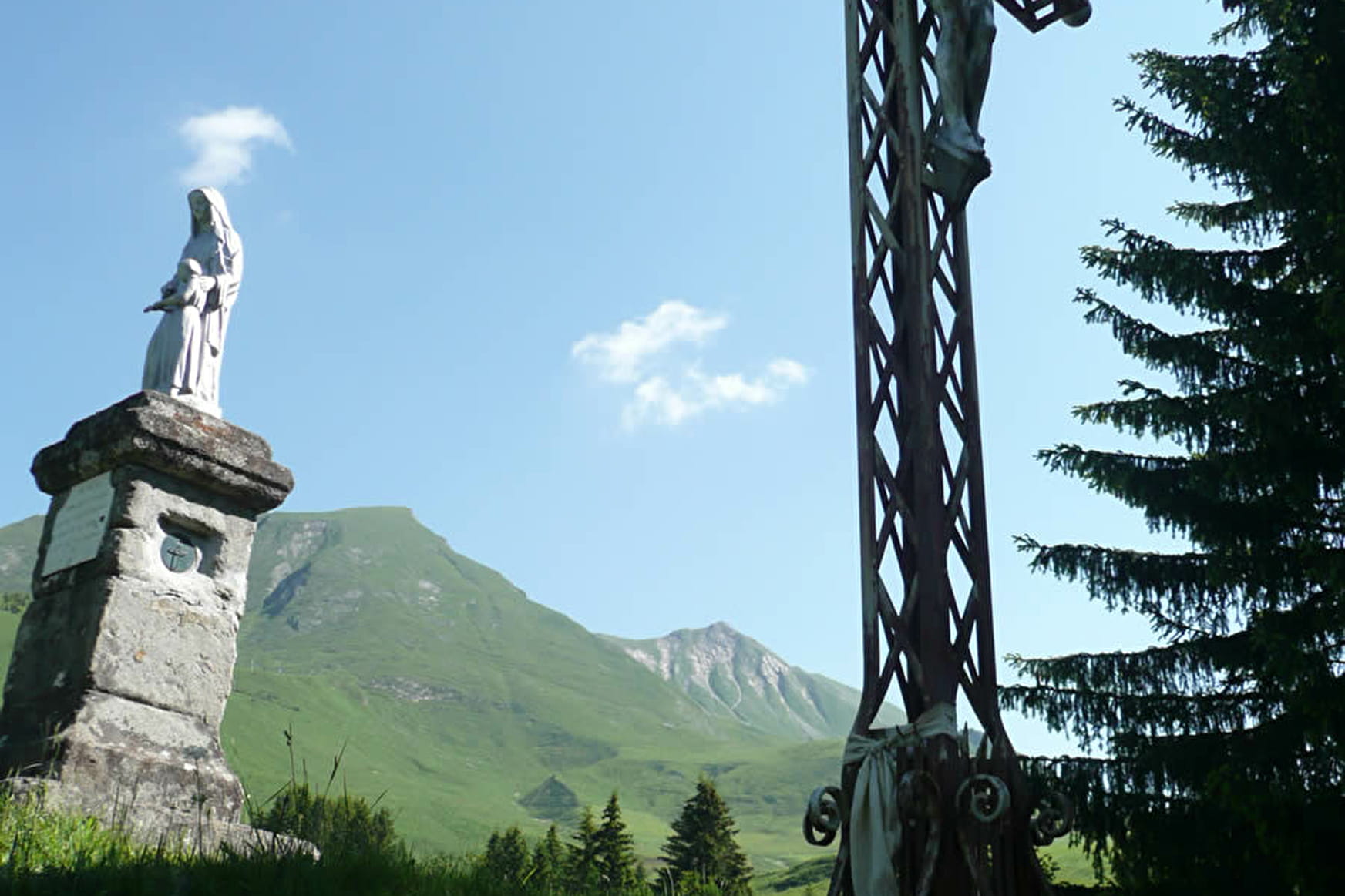
The Stations of the Cross pilgrimage at La Duche originated in 1888, linking the chapel of La Duche with St Bruno's oratory, the site of a miraculous spring.
About
Prices
Free
Reception
Opening
From 25/06 to 15/10 : open daily.
Labels and rating
Services
- Tour free of charge
- Parking
Contacts
Access
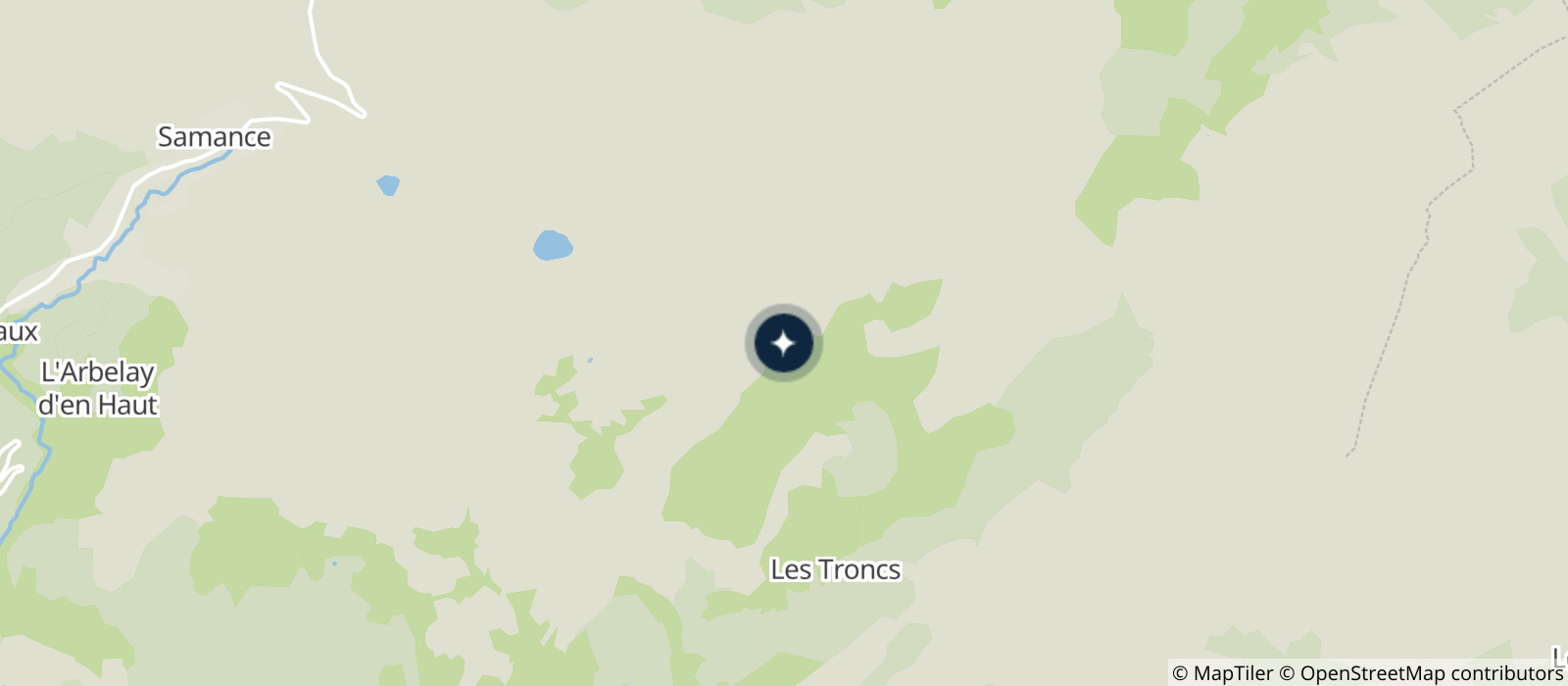
- Not accessible in a wheelchair


